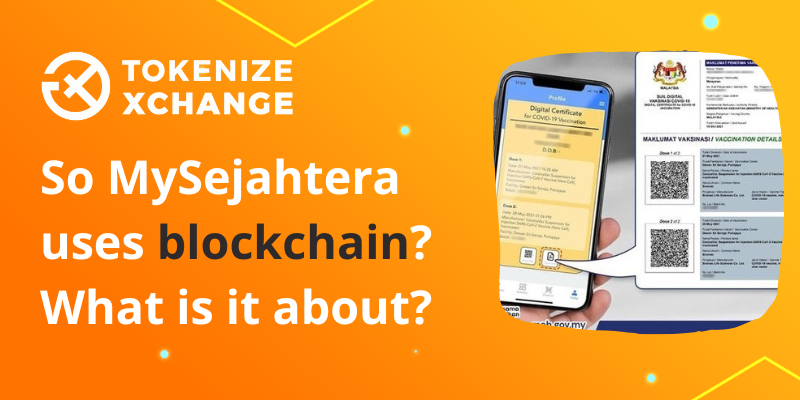
During the ongoing COVID-19 pandemic, the Malaysian government has introduced the MySejahtera application in order to track where a person has gone as well as to keep digital vaccination records. Have you ever wondered how our vaccination records could not be tampered with or duplicated? That is because the use of blockchain technology guarantees the authenticity of our vaccination records so that certain parties could not falsify the document to circumvent the government’s restrictions during the pandemic. Thus, the only way that a fake vaccination certificate could be issued is if the party handling the vaccination abuses their power for monetary gain or other benefits.
Malaysia digital vaccination certificates in My Sejahtera are secured by blockchain technology and come with a traceability feature that tells the exact batch of the vaccine vial used for inoculation.
The vaccination certificate cannot be duplicated and protects an individual’s personal data against external threats. Continue reading to find out how this blockchain technology works, and how its uses can be expanded to protect the integrity of an individual’s personal data.
How does blockchain work?
Blockchain is a system of information being recorded in a way that makes it difficult or impossible to change, hack, or cheat the system. It is a digital and decentralized ledger of records that are organized in ‘blocks’ that are ‘chained’ or linked together using cryptographic validation. When new records are added, the transactions can’t be reversed and the new blocks are linked to the old blocks before and newer blocks after, hence the transparency and resilience of blockchain.
These blocks form a chain of data as an asset moves from place to place or ownership changes hands. The blocks confirm the exact time and sequence of transactions. The blocks link securely together to prevent any block from being altered or a block from being inserted between two existing blocks. Each additional block strengthens the verification of the previous block and hence the entire blockchain. This removes the possibility of tampering by any third party eager to falsify records for their own benefit.
Once data is stored in the blockchain, no one can change or tamper with any of the transaction records. If a person wants to alter or edit a transaction record, an error will be produced. To rectify the error, a new transaction must be added to reverse the error, and both transactions are then visible. In other words, it is quite impossible for anyone to make edits on a blockchain without affecting another record and any amendments made will be able to be traced back to the person.
Besides keeping track of an individual’s digital vaccination records, blockchain technology is increasingly being utilized by other centralized authorities such as healthcare organizations to store and keep track of a patient’s information, which is publicly accessible by a medical institution or any other party authorized by the patient. Each new data on the person’s health could be added in to provide an up-to-date and comprehensive view of their current medical health, allowing for these institutions to efficiently provide the required healthcare treatment or guidance to the patient. Blockchain technology could also reduce the occurrence of human errors such as dispensing the wrong quantity or type of prescription and prevent any party from falsifying their medical records for their own benefit.
Thanks to the growing adoption of blockchain technology, medical records such as our vaccination certificate can be stored securely and safely from potential data breaches, and only accessed by authorized parties. As more organizations are utilizing technology, continuous efforts will be made to upgrade this technology in order to be able to be widely used in other sectors and industries.
